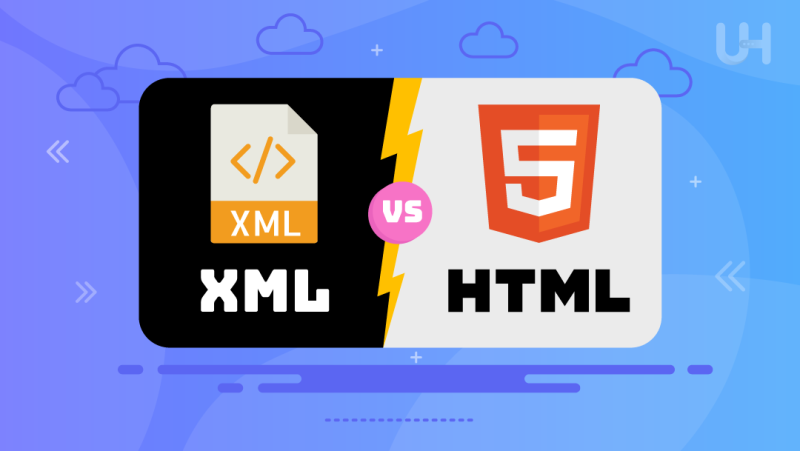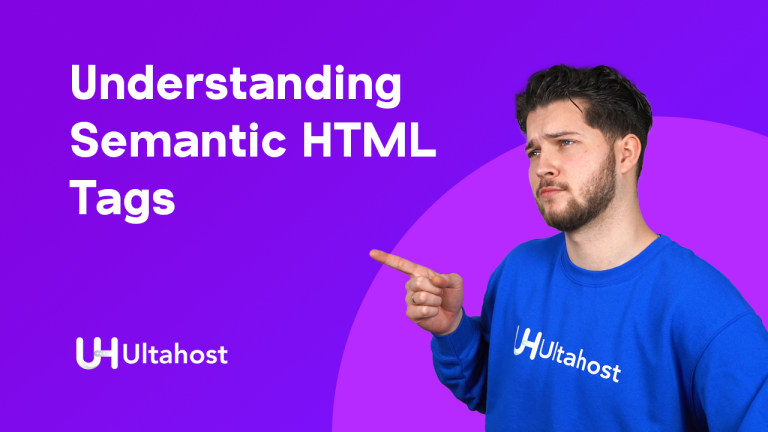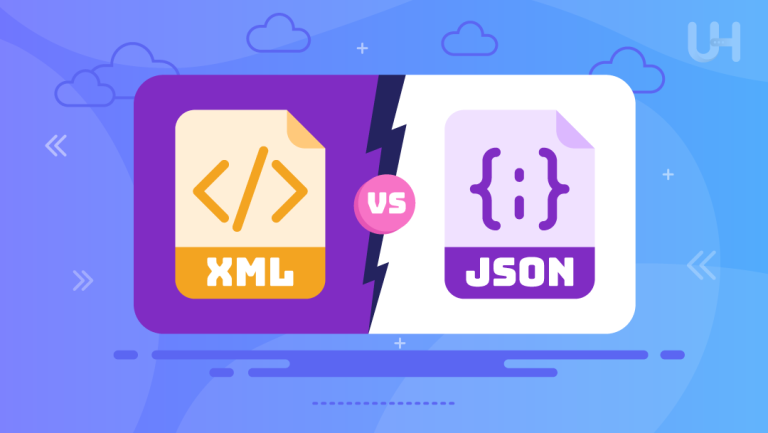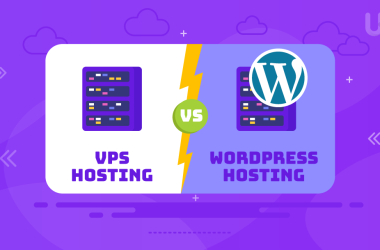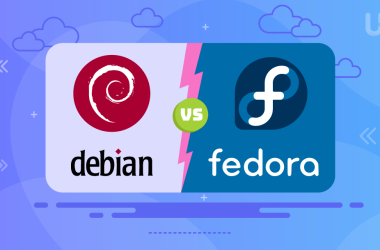If you have dabbled with website design, you must have heard of XML and HTML. But the question is, do you know what is XML or what is HTML, and can you differentiate between them? In this article, we explore the fundamentals between XML vs HTML to help you gain clarity.
At first glance, XML and HTML are markup languages. While they may sound similar, they are unique and have different applications. Having said that both languages work together in several ways and it’s essential for web developers to understand the basics. So, let’s dive straight into the details.
What is XML?
XML or Extensible Markup Language is a common web language for transferring data between applications and servers. Unlike other markup languages, XML needs another application to display, transfer, or use the stored code. While XML has a syntax, the user defines the tags. This is why XML is ideal for creating sitemaps.
When Can You Use XML?
While XML can be used to design websites, data storage and transfer are its primary functions. WordPress uses idempotent APIs such as REST to establish secure server connections, which can transfer data, including XML. The type of data stored depends on the user. However, web applications are the most common type.
Features of XML
Here is the complete feature list of Extensible Markup Language.
- It stores and carries data between web applications and servers.
- XML relies on third-party applications for data analysis and output.
- XML is comparatively easier to write and learn than HTML.
- It is a dynamic language and can create dynamic web pages.
What is HTML?
HTML or Hyper Text Markup Language is popular for creating modern web applications. It is the foundation for defining the structure and layout of a web document by using various elements, such as headings, paragraphs, links, images, etc. If you want to build a website from scratch, HTML is more suitable than WordPress. Experienced developers often use HTML editors to streamline tasks.
When Can You Use HTML?
HTML is primarily used to code the front end of a web application. It is commonly used with other programming languages, such as Python, XML, CSS, etc. Developers can use tags to describe the layout and structure of a page. While these are similar to XML, they cannot be predefined. These tags are stored in a document on the server, which browsers convert to display visual elements on the front end, such as videos, images, tables, etc.

Features of HTML
Here is the complete list of features of Hyper Text Markup Language.
- HTML is one of the easiest programming languages and an excellent first step for budding software developers.
- It uses a simple markup syntax made of attributes and predefined tags.
- HTML is not case-sensitive and displays outputs even with typos and syntax errors.
- It is ideal for creating static web pages.
- HTML integrates naturally with other web languages, such as Python, Ruby, etc.
What are the Differences between HTML vs XML?
While HTML and XML are similar to a certain degree, they have their share of differences. Let’s walk you through the complete list of differences between XML vs HTML.
Data Presentation
HTML is designed to present content and define the visual structure of web pages. It dictates how information is presented to the end user. HTML uses a pre-defined set of tags and attributes to create links, format text, add images, or structure page layouts.
On the other hand, XML describes data structure and organization and doesn’t bother with layout or presentation. It stores and exchanges data in a structured, machine-readable manner and allows users to create custom tags defining data structures.
Validation
HTML is more tolerant of syntax errors. Therefore, browsers can render HTML outputs even if the code has typos. This is one of the reasons you need a high performance WordPress host to handle the extreme demands of HTML rendering.
XML is stricter with syntaxes. Therefore, XML documents must be well-structured, and follow tags, attribute quoting, and nesting parameters closely. Deviating from the rules can cause errors.
Level Up Your Website with Unmanaged VPS Hosting
Enjoy complete control over your virtual private server wth Ultahost’s Unamanged VPS Hosting plans. Build a reliable and professional in-house team to manage your VPS without relying on external services.
HTML elements are predefined and have specific semantic meanings. They often have implicit rendering characteristics and come with default styling and behavior. XML, however, allows users to create custom elements and attributes.
These are application-specific and do not have predefined functions. Users must define the semantics, making XML highly flexible to diverse data structures. In other words, XML tags are data placeholders. The user or application processing the XML data determines their meaning.
Semantics and Flexibility
HTML is designed with semantics in mind. For example, tables, lists, headings, and forms convey specific information to the browsers and users. These elements have specific functions, making it easier to create consistent and predictable content.
With XML, users can define unique semantics based on data requirements. This is a significant advantage over HTML. Therefore, several applications use XML to define tags based on contextual data.
Document Type Definition
HTML can validate Document Type Definition (DTD). However, this is an obsolete practice as modern web applications use HTML5 to simplify validation. However, DTD and XML Schema are fundamental to XML’s validation process.
They define an XML document’s data type, structure, and constraints. It enforces the rules and structures that must be followed during validation, laying the groundwork for valid XMLs.
HTML5 and XHTML
HTML has evolved over the years and the latest iteration is HTML5. It introduced several features, such as improved multimedia support, form-handling capabilities, accessibility features, and more. HTML5 retains the core language’s characteristics while modernizing the functionalities.
Although XML does not have new versions like HTML5, it is compatible with several modern technologies. As a result, you get languages like XHTML, which enforces stricter rules and syntaxes while retaining XML’s core characteristics. So, whether you choose HTML or XML to design a website, choose a reliable Windows VPS for optimum performance.
Conclusion
So, between XML vs HTML, there is no clear winner. Both languages are the building blocks of web applications and each has its uses. Knowing when to use XML or HTML is the key to choosing the best programming language for your application.
Looking for a reliable web host for your business website? Choose Ultahost’s DDoS Protected Website Hosting for total peace of mind. Enjoy unbeatable performance, 3500+ Gbps protection, 55/s server deployment, and more, starting at just $5.99/month.
FAQ
What is XML?
XML is a flexible, text-based format for structuring and storing data. It allows users to define custom tags, making it adaptable for different data types and platforms.
What is HTML?
HTML is the standard language for creating and structuring webpages. It uses predefined tags to format content like text, images, and links for web browsers.
XML vs HTML: Which is better?
Neither is “better” overall as they serve different purposes. HTML is better for displaying content on the web, while XML excels at data storage and transfer between systems.
What is the difference between HTML and XML?
HTML is used for displaying data with a focus on how it looks, using predefined tags. XML is used for data storage and transfer, allowing custom tags to define data structures.
Can XML replace HTML?
No, XML cannot replace HTML as it is designed for data transport while HTML is specifically for web content presentation. They complement each other but serve different roles.
Why is XML used with HTML?
XML is used with HTML to separate data from presentation. It stores data in a structured way, while HTML displays it, allowing dynamic content updates without altering the webpage structure.
What is XML mostly used for?
XML is used for exchanging data between different systems, configuring files, and representing complex data structures in a human and machine-readable format.





